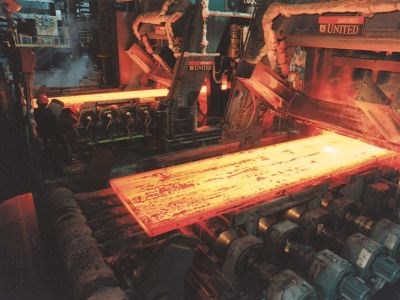For the many unsecured creditors owed millions in payment from Essar Steel Algoma, these are days of high anxiety for Sault Ste. Marie contractors and industrial suppliers.
Since the Sault steel producer entered creditor protection last November, and the steelworks were subsequently put on the selling block, figuring out who’ll be the new owner has become a far from certain process under the complicated, fluid and controversial Companies Creditors Arrangement Act (CCAA).
As months drift by and invoices go unpaid, the situation is casting considerable doubt on the future of some local businesses, admits Adam Pinder, executive director of the 155-member Sault Ste. Marie Construction Association.
“There’s so much uncertainty that it makes for really scary times.”
About 30 of the construction association’s member companies are owed in the neighbourhood of $30 million, which is “significant money in Sault Ste. Marie,” said Pinder.
Overall, creditors across North America are owed $1.6 billion by Essar Algoma, with $1.44 billion secured. The City of Sault Ste. Marie, a secured creditor, is owned $14 million.
“I think it’s important to remember that there are a lot of local people that have sustained some significant losses and it’s not looking promising that there’s going to be anything for them to recover. It’s going to hurt the Sault,” said Pinder.
Since his members filed their claims last February with Ernst & Young, the court-appointed monitor, Pinder said it’s been radio silence.
“We’re on the short end of a long list.”
The powerful United Steelworkers union and Local 2251 have a critical veto in the selection of a new owner, which likely played a factor in the recent withdrawal of KPS Capital Partners, but contractors remain standing on the sidelines, left to monitor court filings and read media reports.
It doesn’t leave Pinder overly optimistic that these shops will see any money based on what he’s read in court documents or in any of the proposals from prospective bidders for Essar Steel.
“If there is money to come, it’s not defined, so it’s hard to say.”
Pinder chose not to get into specifics on whether some companies are laying off employees, but with Essar being the city’s main economic driver, and so much industrial work being spun off into many mechanical and fabrication shops, it’s not hard to imagine their difficulties in a one-industry town.
“When any business sustains a loss they have do something,” said Pinder, “whether it’s not purchasing or not upgrading equipment, not investing in training staff, or hiring new staff or apprentices. They’ll go into a protective operating mode as long they can and run as lean as they can.”
During past restructurings at the former Algoma Steel when North American steel markets were soft, the company would usually mothball outside contractor work.
This time, Essar plunged ahead despite falling steel prices with a ‘business-as-usual’ attitude in embarking on multi-million-dollar plant upgrades just months before entering creditor protection.
“This one hit at full speed,” said Pinder. “It was business as usual one day, CCAA the next. That’s why those (creditor) listings are higher, and there’s a lot of money at stake.”
The Essar situation is another example of a chronic problem that’s plagued Ontario’s construction industry for years: contractors getting paid in a timely fashion.
A possible remedy may come in the form of an expected overhaul to the province’s Construction Lien Act.
Construction law expert Bruce Reynolds was appointed last year to head up the review, but his report back to the government was delayed by repeated requests for extensions to do more industry consultation.
The Wynne government’s June cabinet shuffle is believed to be causing further delays on the report’s release as it is a joint undertaking between the Attorney General and the Ministry of Infrastructure.
“We’re continuing to wait,” said Pinder.
In the meantime, Pinder said some Sault companies working for Essar have taken precautions.
“There haven’t been any issues since the (CCAA) filing on getting paid for items. But I know some people are relying on tighter timelines to kind of ensure that. They do what they have to do to protect their businesses.”
But it’s difficult for these service companies to be more forceful in negotiating a payment schedule when out-of-town contractors are ready to accept any project work available. With new ownership in place, Pinder is hopeful a better business-to-business relationship will emerge.
“It’s up to the individual business owner decision on the amount of risk that they’re willing to tolerate and able to handle. I hope that the overall relationship is improved for everyone involved.”
Essar Steel Algoma’s track record of unpaid bills extends to its bankrupt Minnesota sister company, which owes millions to creditors and contractors in that state involved in construction of a half-finished $1.9-billion taconite and direct-reduced iron project.
Buoyed by state subsidies, and with Essar repeatedly delinquent on meeting payment deadlines, Governor Mark Dayton responded by rescinding the iron ore mineral leases that would supply the plants with raw material.
Last year, Ottawa and Queen’s Park directed a combined $60 million in subsidies for Essar Algoma to make massive plant upgrades, including to its workhorse direct strip production mill, which involved many Sault contractors. However, both levels of government have chosen to remain publicly silent.




